#Sculptfab
Explore tagged Tumblr posts
Text



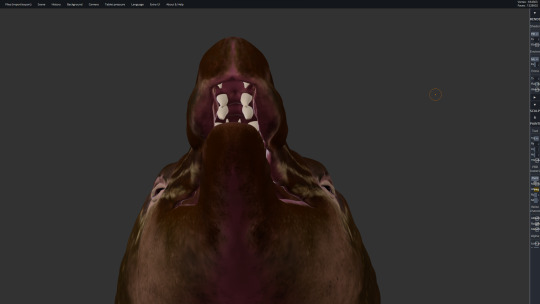
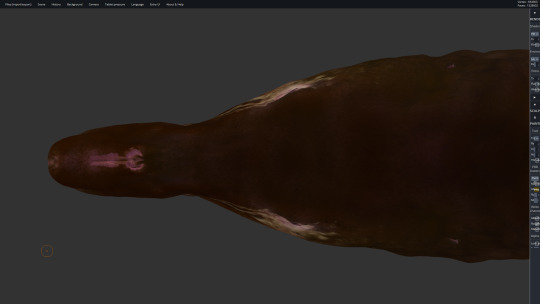
*Another* Archaeocete bust update that I posted to Twitter but forgot about sharing here, this time its my Georgiacetus render, redone this year to improve on the version I did in 2020. This one also got some additional mass packed on the bones and some new colors applied to it, compared to the original, and I hope someday to make a physical, life-size version of this piece, however long it takes to get to that point. Like B. cetoides, this ancient whale was also first found in the Southeastern U.S., but in Georgia instead, and its postcranial skeleton is rather disarticulated and incomplete. The earliest fossils of Georgiacetus vogtlensis are about 5 million years older than the first Basilosaurs, with a much more basal body plan: a larger and better developed pelvis, suggesting prominent legs (which would have been the main source of propulsion since it lacked flukes), a shorter torso and tail, and an altogether smaller body size (estimated to between 10 and 20 feet long). With the scarcity of postcranial material for this genus (such as limbs, certain vertebra, all but the tip of the tail, most of the ribs), our estimation of the animal is informed by fossil material from other, better represented Protocetids. Like the later appearing Basilosaurids, however, Georgiacetus's pelvis was not fused to its vertebrae, and their skulls are visually pretty similar. This mesh was rendered in Sculptfab and SculptGL, with these screenshots being taken in the latter program.
#Georgiacetus vogtlensis#Georgiacetus#Archaeoceti#Protocetidae#Cetacea#North American Prehistory#Paleoart#Digital Sculpture#Sculptfab#SculptGL#Prehistoric Life#Whale Evolution#Christopher Maida Artwork
51 notes
·
View notes
Text
CUERPO POSTINDUSTRIAL
PLANTEAMIENTO DEL PROYECTO
Mediante el dibujo intento provocar una reflexión de cómo se representa el cuerpo humano en el siglo XXI.
El dibujo sucede a partir de imágenes mentales, las cuales represento utilizando papel y un lapicero; para luego convertirse en imágenes digitales; finalizando como esculturas digitales.
Teniendo la inquietud por saber cómo se puede representar los cuerpos (sexual, el que crea, el que quiere ser, el que existe) Trate de investigar el estado de estos en la era Postindustrial.
El concepto del cuerpo postindustrial (proceso de procesos) es lo que trato de plasmar en estas imágenes. Teniendo en cuenta que los cuerpos se encuentran atravesados por las narrativas de la tecnología, alteridad, la transgresión de los límites del cuerpo, etc.
Otro de los conceptos que considero que está vinculado es el Posthumanismo:
El cual es una lectura un tanto particular de la historia de la filosofía; es un intento por rehacer las perspectivas filosóficas de lo que significa ser humano dentro del contexto de (la promesa de) las tecnologías emergentes. Apela al posthumanismo como una serie de preocupaciones acerca de la biología que obliga hacia la búsqueda de la novedad, originalidad, lo que explica porque es inherentemente orientado hacia el futuro. (que tiene sus orígenes en los años noventa)
METODOLOGIA
Empecé a dibujar con un lapicero sin tener una idea concreta de lo que quería realizar regularmente realizaba 3 dibujos por semana; en la tarde o en la noche realizaba estos bocetos. Me interesaba como se puede representar el cuerpo hoy en día, así que empecé a investigar acerca del posthumanismo y el cuerpo postindustrial.
A partir de estas lecturas pude reflexionar y concretar la representación de los conceptos; comencé a trabajar con dibujo digital escaneando los dibujos que realizaba a mano, decidí pintarlo. De nuevo en la noche trabajaba mejor para hacer las imágenes. Luego de los dibujos digitales terminé utilizando Sculptfab (free, web-based sculpting tool based on Stéphane Ginier's SculptGL) donde quise experimentar con los materiales digitales. Todo culmino en las esculturas digitales que cree; donde la tercera dimensión y el movimiento hacian más cercana la representación.
BOCETOS




CONCLUSION
Los cuerpos estamos inmersos en una vorágine de flujos de narrativas y dinámicas sociales que inciden en el cuerpo y también en sus propios procesos.
Utilizando la representación, a mi parecer; podría ser una manera de reconocerse o reconocer mediante la imagen y reflexionar sobre el estado del mismo.
STATEMENT
La inquietud de como representar el cuerpo en el siglo XXI me lleva al cuestionamiento de
¿Como es atravesado por las narrativas de la tecnologia?,¿Como se transgreden sus límites?, Cual es su alteridad?, ¿Cuál es el alcance más allá de su estado físico?,¿En qué dimensiones habita?
PIEZAS FINALES DEL PROYECTO




https://skfb.ly/6CzYQ




https://skfb.ly/6CzYV
DISPOSITIVO
Cuestionar el capitalismo, a partir de la producción textil en masa
La mano de obra barata

ARTE RELACIONAL
En este ejercicio utilice una colcha y el audio de la canción de los tres cochinitos de Gabilondo Soler.
Se trataba de utilizar la memoria colectiva, donde la colcha simbolizaría el momento intimo de la madre y el hijo(a), la vulnerabilidad de los niños.
El gesto de acostarse y la posición tan vulnerable que este significa.





1 note
·
View note
Photo



Basilosaurus skull and life restoration created in Sculptfab and Sculptg, skull superimposed in SumoPaint. I liked the idea of it having lips covering it’s teeth much like modern toothed whales, and so that’s what I gave it. Didn’t finish sculpting the bottom teeth, but you get the idea ;) More paleoart to come!
99 notes
·
View notes
Link
Sculptfab is a very simple tool letting you sculpt 3D models in the browser, and publish them in 1 click to sketchfab.com

0 notes
Text
44 --- Bookmarks
Websites have come a long way, I think it is the first time I have realised that webapps are a thing. They can really replace software. Unfortunately, the popular browsers are behind the times. There is no webapp library, I cannot have a ‘web desktop’. Bookmarks are hidden in ugly lists. There is no simple way to save webapps for offline use. These should be ‘standard’ features. Instead, I have decided to consolidate a pretty list of tools which I think are essential webapps for creative technologists. 3D modelling with ScupltGL & SculptFab https://stephaneginier.com/sculptgl/ https://labs.sketchfab.com/sculptfab/

Probably the best 3D modelling software I have ever used. You can model like clay and even people who cannot 3D model can use this software. Models can be exported to standard file formats such as .obj so they can be imported by other software. 3D animation with Clipmaker https://panzoid.com/tools/clipmaker

Probably the best 3D animation software I have used (not including SPORE). You can import the models made in SculptGL and create animations by moving various elements around, changing the camera and adding simple effects. Not as simple as it could be, yet rather powerful. The only thing missing is Skeletal Animation. It is possible to export Video with this software! Image editing with Aviary https://www.aviary.com/

You may not always have an image editor on the computer you are working on, so you can use Aviary instead. It does a reasonable amount of photo-editing! It made this image look like it was taken by a $4000 camera! (it was taken by a smartphone) So there you have it, some of the most functional web technology available. I will edit this post if I find more apps in the future!
1 note
·
View note
Photo

Phone Doodle Creature Face https://ift.tt/2wWzUVX
This daily doodle was done (and live streamed) on my phone, a Lenovo P2, using browser based sculpting tools Sculptgl and Sculptfab (to add it to sketchfab).
Face doodle 3 by Chaitanya Krishnan on Sketchfab
See the process below
0 notes
Text
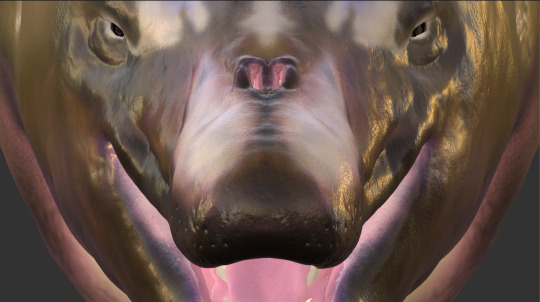


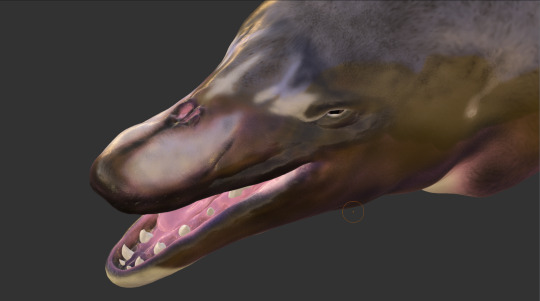
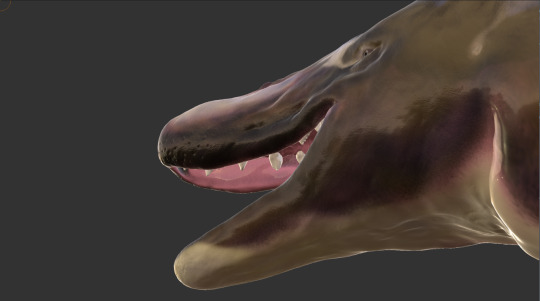

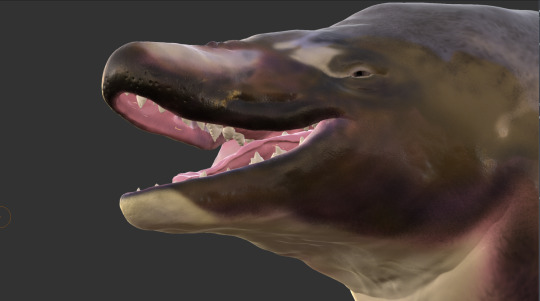
I shared this to Twitter like a month ago but forgot to share it here, this is an update to my Basilosaurus bust that I first rendered in 2017-18, which I then remeshed and repainted between last year and this year. Compared to the original render, this one has all its teeth, the skull more closely matches the fossil material, the face is fleshier, and the coloration, while similar to the original version, has been redone from scratch with new brushes and patterns. Basilosaurus cetoides was an Archaeocete whose fossils were first found in Louisiana, which, during the Eocene epoch, lay partially beneath the Gulf of Mexico. It had a long, narrow body that reached up to 66 feet long, a proportionally small head featuring multiple kinds of teeth, and vestigial hind limbs. Members of this genus are also known from northern Africa and other regions that were once submerged beneath the Tethys Sea, and also from Peru and possibly even New Zealand, a wide geographical range that demonstrates its success as a top predator in the oceans of the Late Eocene. This mesh was rendered in Sculptfab and SculptGL, with these screenshots being taken in the latter program.
#Basilosaurus cetoides#Basilosaurus#Archaeocete#Cetacea#Paleoart#Digital Sculpture#Sculptfab#SculptGL#Prehistoric Life#North American Prehistory#Whale Evolution#Christopher Maida Artwork
49 notes
·
View notes
Text
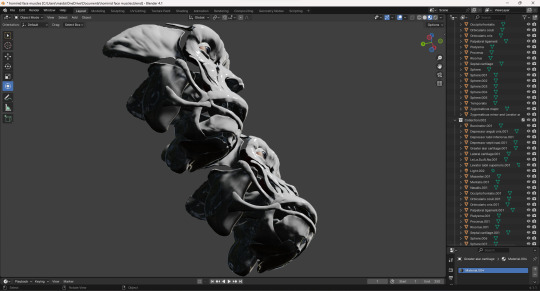


Here's some hominid soft facial anatomy : )
The model on the right of frame, representing Australopithecus sediba, has been in sporadic progress for over a year now across a few programs, and I was able to create the model on the left of frame by conforming all the A. sediba elements to the Kabwe cranium (belonging to Homo heidelbergensis *or* H. bodoensis by some classifications). That latter process took place entirely in Blender over only a couple days, so I'm pretty happy with this method. While the skulls themselves aren't visible in these screenshots, they are part of the Blender file and were downloaded directly from MorphoSource, which was pretty helpful. Digital sculpture (SculptFab, SculptGL, 3D Builder, Blender), 2023-24
#Australopithecus sediba#Kabwe cranium#Homo heidelbergensis#Homo bodoensis#Blender#hominid reconstruction#facial anatomy#anatomical model#digital sculpture#3d rendering#musculature#tendons#cartilage#eyeballs#human evolution#comparative anatomy#Christopher Maida Artwork
14 notes
·
View notes
Photo





Here's another hominid bust I've had on the back burner for a bit now; this one's a Neanderthal, roughly based on the skull Guattari 1.
As ever, made in SculptFab and SculptGL with a little involvement from 3D Builder, and he's not quite finished
#Neanderthal#Guattari 1#digital sculpture#SculptFab#SculptGL#hominid#bust#human evolution#hominid reconstruction#Italian prehistory#paleoart#work in progress#Christopher Maida Artwork
32 notes
·
View notes
Video
youtube
In between yet another map commission, I've been working on this Homo ergaster render based primarily on KNM-ER 3733. Hopefully this will help me finish the painting that featured this species, which I put on hiatus back in April for lack of precise references.
Even aside from that ambition though, I'm liking this as a standalone piece, and I'm happy with how it's turning out so far.
Rendered in Sculptfab and SculptGL, opened and lit in 3D Viewer, and recorded with Aiseeesoft Screen Recorder.
#digital sculpture#rendered bust#hominid#Homo ergaster#Sculptfab#SculptGL#3D Viewer#paleoart#human evolution#Kenyan prehistory#work in progress#Christopher Maida Artwork
1 note
·
View note
Photo

One more hominid skull post, now it's Longlin 1 and Maludong 1, the cranium and mandible of one of the Red Deer Cave people, discovered in 1979. The Red Deer Cave people were a population from southwest China, anywhere from 11,500 to 14,300 years old, and of uncertain affinity to other hominids in the absence of (as yet) identifiable DNA. Proposed classifications range from anatomically modern Homo sapiens, to a late-surviving offshoot of much earlier species of Homo, with suggestions of Denisovan admixture as well. At any rate, it is the latest surviving hominid population that is not definitively AMH (anatomically modern human), outlasting the Neanderthals by at least 25,700 years.
SculptGL, Sculptfab, 3D Builder, and Photopea 2019
#hominid#Red Deer Cave people#human evolution#digital sculpture#Longlin 1#Maludong 1#Chinese prehistory#paleoart#Sculptfab#SculpltGL#3D Builder#Photopea#color grading#Christopher Maida Artwork
13 notes
·
View notes
Photo




Here's another skull render, this time of KNM ER 1813, assigned to Homo habilis and a little bit more complete than the fossil I based my last piece off of. I went through the same render, screenshot, and color grade process as last time, but with much more time spent in Scupltfab, hence the finer detail and other improvements. The fossil is dated to 1.9 million years old, and was found in Kenya near the shore of what is now Lake Turkana. Though estimated to have belonged to a fully grown adult, the skull is smaller than average for Homo habilis.
#Homo habilis#hominids#human evolution#paleoart#digital sculpture#Sculptfab#SculptGL#3D Builder#Photopea#skull restoration#fossils#Christopher Maida Artwork
2 notes
·
View notes
Photo





Homo floresiensis bust digital sculpture (Sculptfab and SculptGL) 2019
#hominins#human evolution#sculptfab#sculptgl#digital sculpting#life restoration#reconstruction#paleoart#paleoillustration#Homo floresiensis
4 notes
·
View notes
Photo






Paranthropus boisei bust, sans hair digital sculpture (Sculptfab and SculptGL) 2019
#Paranthropus#hominids#human evolution#sculptfab#sculptgl#digital sculpting#life restoration#reconstruction#paleoart#paleoillustration
3 notes
·
View notes
Photo






Unless I figure out how to convincingly add hair, i think my reconstruction of the Neanderthal Guattari 1 is complete : ) Since the last time I shared this, I resized and finished the eyes, added some asymmetry to his pose and his features, textured his skin, and made a new matcap. Guattari 1 refers to a mostly complete cranium found in the Guattari Cave in Italy, during a 1939 expedition. The skull belonged to an adult Neanderthal who died somewhere between 56 and 50 thousand years ago, and its placement among other bones within the cave, as well as damage to certain parts of it, may have been the result of hyena activity.
Rendered with Sculptfab, SculptGL (the setting of these screenshots), and 3D Builder,
2021
#digital sculpture#hominid reconstruction#Guattari 1#Homo neanderthalensis#Neanderthal#Italian prehistory#human evolution#paleoart#paleoanthropology#Christopher Maida Artwork
6 notes
·
View notes